Ты умеешь делать черный чеснок?
Black garlic, also known as fermented black garlic, is a product made by fermenting fresh garlic at high temperatures and high humidity. Compared to garlic, black garlic has a significantly lower content of substances such as water and fat, and a significantly higher content of substances such as sugars and trace elements. The content of substances such as protein, reducing sugars and vitamins is at least twice that of garlic. Therefore, black garlic is rich in essential nutrients for the human body and can even improve human body functions. It has various functions such as anti-oxidation, antibacterial, immune enhancement, liver protection and liver care. Black garlic is soft and elastic, and after entering the mouth, it is soft and sweet, without the pungent taste and irritating odor of garlic. It has become a recognized natural health food with broad prospects for development and application [1-4].
Основным сырьем для переработки черного чеснока являются многоклеточный чеснок и одноклеточный чеснок. Многоклеточный чеснок подразделяется на белокожий чеснок и пурпурный чеснок, а сырье для одноклеточного чеснока в основном производится в юньнань. Продукты называются многоклеточный черный чеснок и одноклеточный черный чеснок соответственно. Поскольку цена одноклеточного чеснока выше, чем цена многоклеточного чеснока, цена одноклеточного черного чеснока выше, чем цена многоклеточного черного чеснока. Однако одноклеточный черный чеснок удобнее есть и имеет лучший вкус, поэтому его любят потребители [5-6]. Черный чеснок продукты приходят в различных формах, в Том числе черный чеснок с кожей на, черный чеснок без кожи, черный чеснок порошок, черные чеснок напитки, черный чеснок джем, черный чеснок соевый соус, черный чеснок уксус, и другие replicas [7-8]. В настоящем документе рассматриваются современные технологии обработки черного чеснока, технологии предварительной обработки и направления развития, с тем чтобы обеспечить справочную основу для производства и применения черного чеснока и дальнейших исследований.
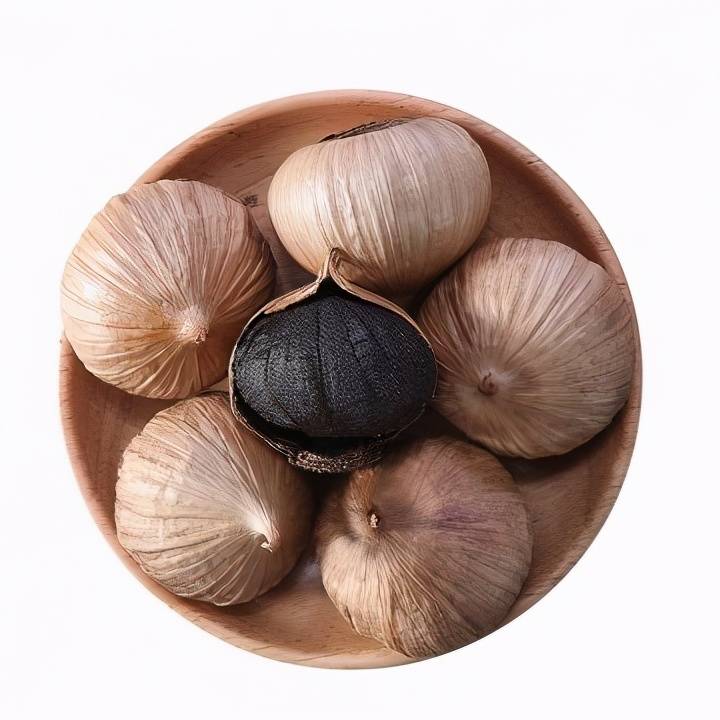
1 черная технология обработки чеснока
Garlic is fermented at high temperatures and high humidity, destroying its own cell tissue. A series of chemical reactions occur in the intracellular components, mainly the Maillard reaction between sugars containing carbonyl groups and components such as Аминокислоты (аминокислоты) and proteins containing amino groups, producing melanin and forming the unique qualities of black garlic. Currently, there are two main processes for black garlic fermentation: solid-state fermentation and liquid fermentation [9-10].
1.1 твердотельная ферментация
Твердотельная ферментация черного чеснока является метод ферментации, в котором чеснок непосредственно используется в качестве твердого субстрата для самоферментации. Это сохраняет целостность чеснока и снижает потери питательных веществ, в результате чего черный чеснок продукты с лучшими органолептическими качествами. В настоящее время твердого ферментации процесс в основном используется в производстве черного чеснока в китае. Основными технологическими процессами являются: отбор чесночного сырья → inspection → ding and selection → loading on trays → high temperature, high влажность fermentation → → → product inspection → finished product [11-12].
In the solid-state fermentation process, high-temperature, high-humidity fermentation is the most important step. It is the condition for the Maillard reaction in garlic and also the main factor affecting the content of active ingredients in black garlic [13]. High-temperature, high-humidity fermentation can be divided into two types: constant temperature fermentation and variable temperature fermentation. In constant temperature and humidity fermentation, garlic is placed in a fermentation workshop, heated to 50–80 °C, and humidified to 50%–80%. The black garlic can be made after one month of fermentation. This method is easy to operate and control, but it consumes a lot of energy and is inefficient [14]. However, variable temperature fermentation is beneficial to the accumulation of effective ingredients in black garlic, and can better improve the sensory quality of black garlic, improve the efficiency of processing, and save energy [15]. At present, domestic black garlic production mostly uses variable temperature fermentation. During the use of variable temperature fermentation, the origin, variety and storage conditions of each batch of garlic are different, so its moisture content, garlic clove size, and component ratio also vary. The temperature and time at each stage of the actual fermentation process need to be determined and controlled by experienced technicians.
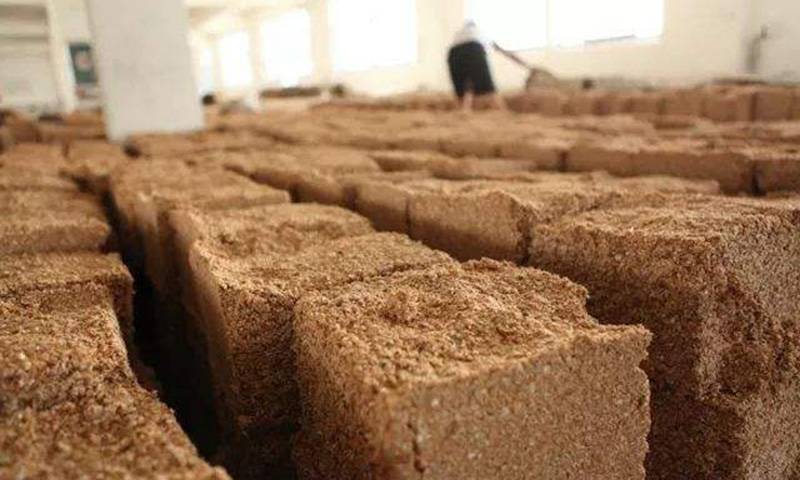
1.2 жидкая ферментация
Большая часть существующих производственных процессов для черного чеснока фермента весь чеснок, и есть меньше сообщений о жидком процессе ферментации. Жидкое ферментация в основном использует дробленый чеснок или чесночные гранулы в качестве сырья, которые помещаются в герметичный контейнер и ферментируются с определенной долей воды в качестве ферментационного субстрита [16]. Технологический поток жидкого ферментации является чесночный выбор → peeling → → чистка → garlic clove дробление → → → герметизация → fermentation packaging готовой продукции [17].
В процессе жидкого ферментации из черного чеснока не выбрасываются такие пахнущие фолом вещества, как сульфиды, что значительно улучшает рабочую среду. Кроме того, процесс жидкого ферментации сокращает время ферментации и увеличивает содержание активных веществ в черном чесноке путем добавления воды, герметизации и ферментации при переменной температуре. Он прост в эксплуатации, занимает мало места и удобен для промышленного производства. Соотношение жидкости к материалу и процесс дробления чеснока клея являются важными факторами, влияющими на жидкую ферментацию черного чеснока. Размеры чесночных клещей и соотношение жидкости к материалу напрямую влияют на накопление эффективных веществ в черном чесноке. Luo Cangxue et al. [18] показали, что когда размер частиц составляет 4 мм, а соотношение жидкости к чесноку 2:1, в результате черный чеснок продукт темно-коричневый по цвету, однородный по цвету, сладкий и кислый по вкусу, почти без аромата чеснока, по сравнению с неферментированным чесноком, активность сода увеличивается в 15 раз, общее содержание фенола увеличивается в 5 раз, а растворимого сахара снижается примерно на 30%.
2 Black garlic Обработка данныхpretreatment technology
Traditional black garlic processing is time-consuming and energy-intensive. Various pretreatments such as freezing and ultrasound can be used to destroy the cell structure of garlic, promote the dissolution of reaction substrates, accelerate the Maillard reaction and fermentation process, shorten the processing time of black garlic, and reduce energy consumption and costs. Pretreatment can promote the accumulation of reducing sugars, amino nitrogen, total phenols and other contents in black garlic, increase the content of functional ingredients, and the taste, color and flavor of the prepared product are almost the same. At present, the main pretreatments of garlic in the domestic production of black garlic are low-temperature freezing, ultrasound, microwave and other methods [19].
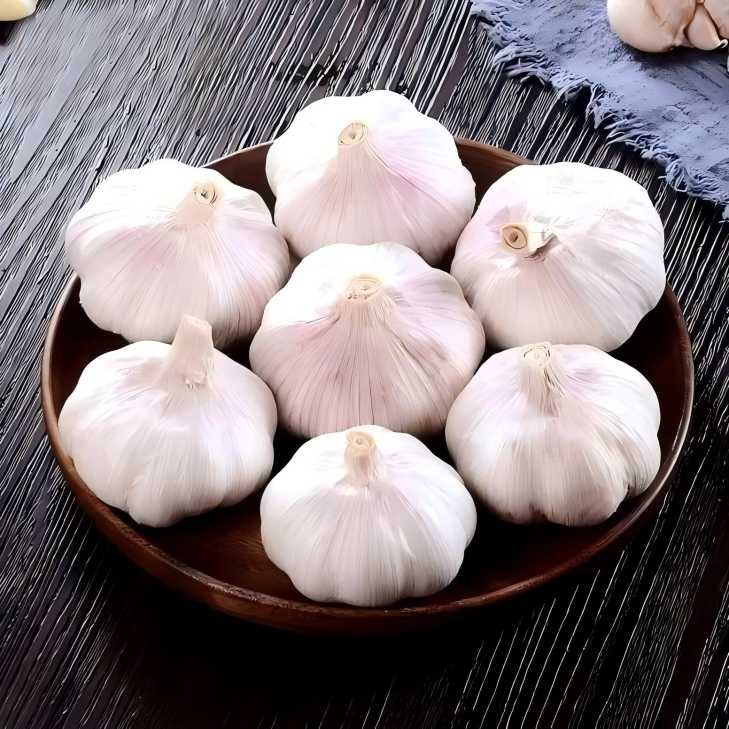
2.1 замораживание при низких температурах
В условиях замораживания кристаллы льда образуются внутри чесночных клеток, изменяя концентрацию растворителя внутри и снаружи клеток, вызывая вздувание клеток, разрушение стенок и мембран клеток, а также разрушение структуры клеток. Чеснок помещается в замороженные (-18 ℃) условия на период времени, который полностью разрушает клеточную ткань. Затем, он помещается в 45 - гравитационных условиях, и из-за повышения температуры, внутриклеточная тканевая жидкость течет, и fructans вступают в полный контакт с ферментом и гидролизируются, производя снижение сахара. В сочетании с 15- дневным процессом ферментации с переменной температурой это ускоряет реакцию майяра и сокращает время обработки. Содержание веществ, таких как общие фенолы в черном чесноке, также увеличивается, а качество готового черного чеснока улучшается [19-20]. Результаты сенсорной оценки показывают, что черный чеснок, предварительно обработанный замораживанием, имеет более сладкий вкус и лучшую текстуру. Чем ниже температура замерзания, тем слаще вкус; Чем выше температура реакции, тем значительнее изменение внешнего вида чеснока, и тем меньше объем. На ранней стадии чеснок мягкий и липкий, в то время как на более поздней стадии он более эластичный и не липкий [11,21].
2.2 высокая температура
Высокие температуры могут привести к ряду изменений в пищевых продуктах, таких как денатурация белка, неактивация фермента и денатурация крахмала, а также к повреждению клеточной структуры. Жао Xueqing и др. [11] очищенный от оболочки свежий чеснок и варил его в воде на 100 °C в течение 3 мин, затем фермировал его на 70 °C и 85% относительной влажности, чтобы получить черный чеснок продукт. По сравнению с контрольной группой существенных изменений во времени ферментации не произошло, однако содержание снижающегося сахара, общего фенола и аминоазота возросло. Ван Xibo et al. [22] получил черный чеснок в условиях паром температуры 127 °C, время паром 70 мин, температура сушки 95 °C, время выпечки 6.5 h условиях подготовил черный чеснок и традиционный процесс ферментации подготовил черный чеснок продукт качество в основном аналогично, общее содержание фенола и других активных ингредиентов также аналогично, но значительно сократить время черный чеснок подготовки, повысить эффективность производства, сократить потребление энергии, Для разработки и использования функциональных чесночных изделий обеспечивает техническую основу.
2.3 микроволновая печь
Чеснок нагрева с микроволновыми волнами может иметь тот же эффект, что и высокая температура предварительной обработки. Ли шаньшань [23] обнаружил, что после 1 мин микроволновой предварительной обработки при 450 вт, время обработки черного чеснока было сокращено с 21 д до 18 д. Интенсивность браунинга группы микроволновой обработки достигла эффекта контрольной группы на 15 - й день ферментации. На 18 - й день ферментации снижение сахара в группе микроволновой обработки составило 40%, в то время как контрольная группа не достигла 40% до 21 - го дня. Общее содержание фенола в группе с микроволновой обработкой было значительно выше, чем в контрольной группе на протяжении всего процесса ферментации. Содержание аминоазота в обработанной микроволновой волной группе начало снижаться на 9 - й день, в то время как в контрольной группе понижательная тенденция наблюдалась лишь на 15 - й день.
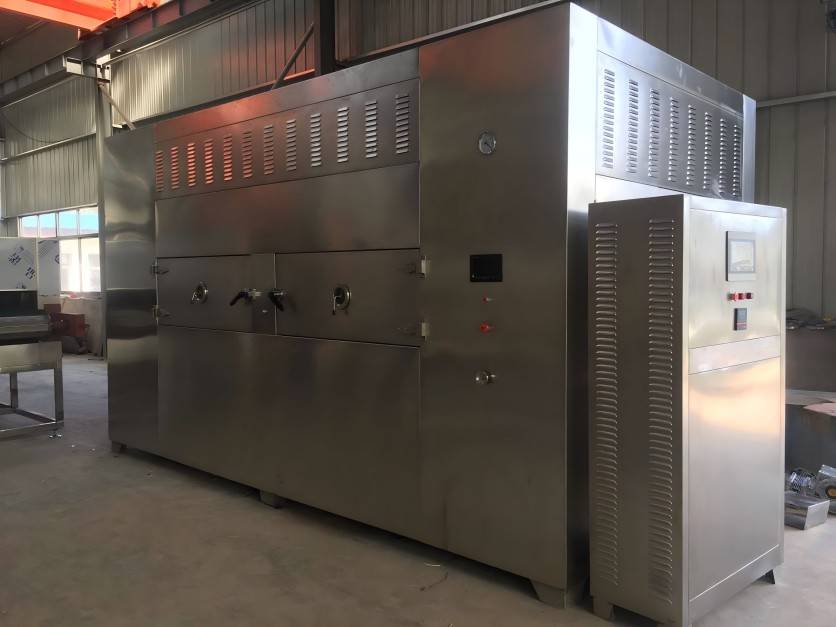
2.4 сверхвысокое давление
Технология сверхвысокого давления — это физический процесс, который может разорвать нековалентные связи в пищей, денатуре, деактивировать и гелатинизировать макромолекулы, такие как белки, ферменты и крахмалы в пищей, и оказывает определенное влияние на их структуру. Это экологически чистая технология переработки пищевых продуктов, которая уменьшает многие недостатки традиционных методов термической обработки. Meng Lingdong et al. [24] использовали комбинированный метод предварительной обработки и ферментации при сверхвысоком давлении для подготовки готового черного чеснока. Испытание показало, что с увеличением сверхвысокого давления и увеличением времени удержания скорость браунинга черного чеснока сначала увеличилась, а затем снизилась, содержание влаги уменьшилось, общее содержание сахара увеличилось, а эластичность повысилась. Это говорит о Том, что при сверхвысоком давлении 300 мпа и удерживании давления в течение 15 минут готовый черный чеснок сладко-кислый, тонкий по текстуре и эластичный, а качество готового черного чеснока является лучшим. Zhong Cheng et al. [25] приготовили черный чеснок путем предварительной обработки чеснока с ультра-высоким давлением и ферментации его. Результаты показали, что антиоксидантная способность приготовленного черного чеснока была значительно выше, чем у белого чеснока, а уменьшающая способность и гидроксилорадикальная способность к уборке мусора были наибольшими, когда время удержания было 5 мин и 20 мин, соответственно.
2.5 прочие расходы
Pre-treatment methods such as low-temperature freezing, high temperature, and microwaving can promote the accumulation of reducing sugars and the production of Полифенолы в черном чесноке, shorten the processing time, and improve production efficiency. In addition, there are other pretreatment techniques for black garlic processing. For example, Pei Houbao [19] found that ultrasonic pretreatment can effectively increase the total enzyme and reducing sugar content of black garlic, increase browning, significantly reduce processing time, and improve the quality of the finished black garlic. Compared with ordinary black garlic, it can effectively reduce the bitterness of the finished black garlic and improve the taste. Studies have shown that aerobic respiration inhibition pretreatment can also effectively shorten the processing time of black garlic, significantly increase the content of reducing sugars and total phenols in the product, and improve the taste of the product compared to ordinary black garlic. It can be seen that ultrasonic pretreatment can change the average distance between garlic molecules with continuous molecular vibration, producing cavitation and destroying the garlic cell structure; while aerobic respiratory inhibition pretreatment can cause garlic to produce hexanol and acetic acid, thereby destroying the cell structure.
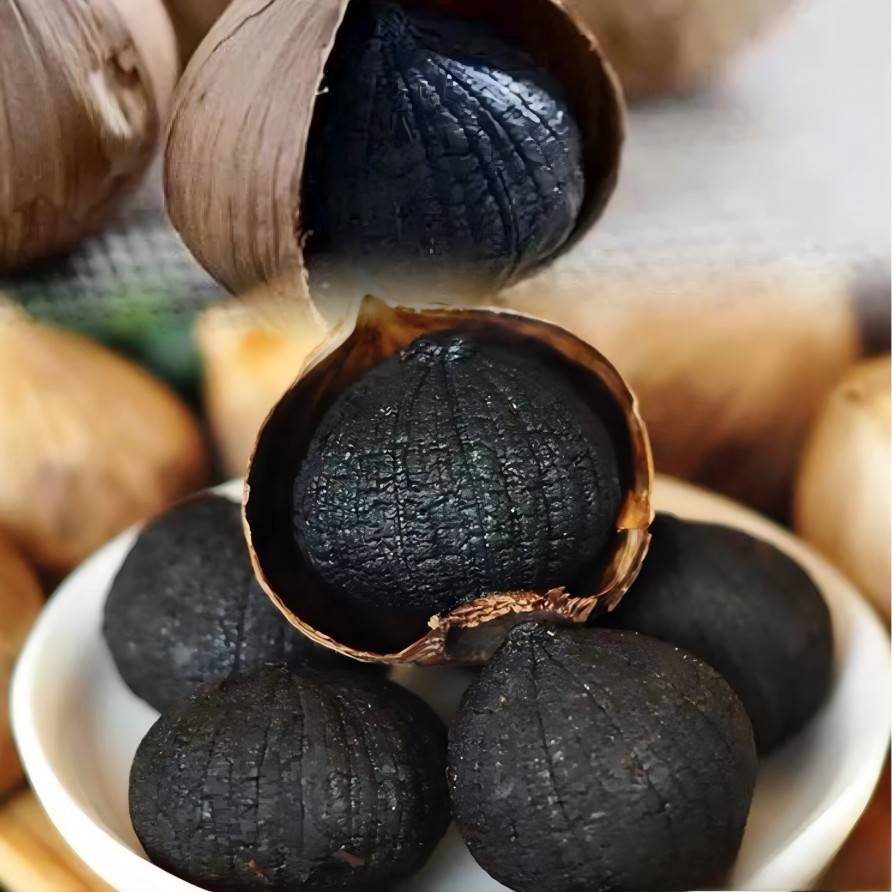
3. Резюме
В настоящее время ферментационное оборудование для контроля температуры и влажности при обработке черного чеснока является относительно зрелым, и было проведено много исследований по технологии предварительной обработки черного чеснока. Вместе с тем существует относительно небольшое число предприятий, которые фактически используют технологию предварительной обработки в производстве, главным образом из-за отсутствия вспомогательного оборудования для предварительной обработки. Таким образом, следующий шаг для производителей черного чеснока оборудования заключается в расширении исследований и дизайна в этой области, и производить соответствующее оборудование предварительной обработки для обработки черного чеснока, с тем чтобы повысить эффективность обработки и качество черного чеснока в фактическом производстве. В то же время существует возможность разработки оборудования, которое может использоваться в сочетании с различными технологиями предварительной обработки. Вместе с тем следует уделять внимание взаимосвязи между ценой оборудования и фактическими производственными выгодами, с тем чтобы оборудование для предварительной обработки было простым и практичным.
Ссылка:
[1] Кимура с, тунг ик, Пан мх и др. Черный чеснок: критический обзор его производства, биоактивности и применения [J].Журнал продуктов питания и Анализ наркотиков, 2017, 25(1): 62 — 70.
[2] цзи яньру, ши цзе, лю юфэн. Анализ изменений основных питательных веществ при производстве черного чеснока и оптимизация процессов [J]. Наука и технологии пищевой промышленности, 2015, 6(5): 360 — 364.
[3] Чжан з, лей м, лю р и др. Оценка содержания аллиина, сахарида и антиоксидантной активности черного чеснока при термической обработке [J]. Журнал пищевой биохимии, 2015, 39(1): 39-47.
[4] чжэн лан, ма яохонг, ян юньхой и др. Сравнительное исследование структурных характеристик и антиоксидантной активности черных полисахаридов чеснока и свежих полисахаридов чеснока [J]. Наука и техника о продовольствии, 2018, 43(4): 194 — 200.
[5] чжу синпень, ван инмэй. Сравнение качества пяти видов черного чеснока, получаемого из чеснока [J]. Китайская приправа, 2019, 44(1): 117-124.
[6] цзян сюэ. Исследования по стандарту качества черного чеснока [D]. Тайвань и Франция#39; ан: шаньдунский сельскохозяйственный университет, 2016.
[7] Ren Guangyue, Liu Hang, Liu Yanan. Оптимизация процесса распыления ферментативного раствора черного чеснока методом поверхностной реакции [J]. Исследования и разработки в пищевой промышленности, 2016, 37(21): 72 — 78.
[8] хуан миньсин, чжао венхонг, бай вейдун. Научно-исследовательский прогресс в области функций здоровья и технологии обработки черного чеснока [J]. Китайские приправы, 2015, 40(8): 136-140.
[9] Чжан х, ли н, Лу х и др. Влияние температуры на качество черного чеснока [J]. Журнал науки продовольствия и сельского хозяйства, 2016, 96(7): 2366-2372.
[10] сюн синцзянь, Лу цзяньсин, ли Дан и др. Технология обработки черного чеснока и ее применение [J]. Переработка сельскохозяйственной продукции (журнал), 2014(6): 74 — 77.
[11] чжао XQ, Li SS, Hou WB и др. Влияние различных предварительных процедур на качество черного чеснока [J]. Наука и технологии пищевой промышленности, 2017, 38(23): 1-4.
[12] Chen B. анализ характерных компонентов ферментированного чеснока и исследования процесса ферментации [D]. Сючжоу: китайский горно-технологический университет, 2017.
[13] Кан о джей. Физико-химические характеристики черного чеснока после В отличие от других - тепловая энергия processing В этом разделе [J]. Профилактическое питание и питание Пищевая наука, 2016, 21(4): 348 — 354.
[14] Yang X. способ производства и переработки черного чеснока: Китай, CN200810228855.4[P]. 2010-06-16.
[15] антон. Исследования по технологии обработки черного чеснока [D]. Тайвань и Франция#39; ан: шаньдунский сельскохозяйственный университет, 2011.
[16] чжао и, чжан х л, тан г с и др. Исследование процесса подготовки и антиоксидантной активности черного чеснока методом неферментации [J]. Наука и техника о продовольствии, 2014, 39(8): 91 — 95.
[17] шэньси университет науки и техники. Способ приготовления черного чеснока путем жидкой ферментации: Китай, CN201210435546.0[P]. 2013-02-13.
[18] Лу кансюэ, су дунся, чэнь шуйю. Оптимизация процесса ферментации жидкого черного чеснока [J]. Сделки китайского общества сельскохозяйственного машиностроения, 2013, 29(18): 292-297.
[19] пей хубао. Исследование влияния условий предварительной обработки на обработку черного чеснока и его качество [D]. Тайвань и Франция#39; ан: шаньдунский сельскохозяйственный университет, 2013.
[20] ван хайсу, у хао, ян шалан и др. Сравнительный анализ качества черного чеснока, получаемого в результате различных процессов [J]. Современные пищевые науки и технологии, 2014, 30(7): 230-236.
[21] чэнь линг. Эффект замерзания и реакции майяра на качество черного чеснока [D]. Хефей: аньхуйский сельскохозяйственный университет, 2018.
[22] ван сибо, ю цзе, чжан цай. Исследование о процессе подготовки и антиоксидантной активности черного чеснока методом неферментации [J]. Сделки китайского общества сельскохозяйственного машиностроения, 2017, 48(4): 321-326.
[23] ли шаньшань. Влияние микроволновой предварительной обработки на время обработки и качество черного чеснока [D]. Ухань: хуазхонский сельскохозяйственный университет, 2018.
[24] Мэн линдун, хе рюйси, ли юн. Влияние различных ультра-высокого давления обработки на качество обработки черного чеснока [J]. Китай фрукты и овощи, 2019, 39(5): 1-7.
[25] чжун чэн, сюй гохуан, у сяоин и др. Эффект удержания времени на некоторые питательные вещества и антиоксидантную активность черного чеснока [J]. Современная пищевая наука и технологии, 2014, 30(3): 49-52.
-
Предыдущий
Исследование по изменению вкуса черного процесса ферментации чеснока
-
Следующий проект
Что такое черный процесс ферментации чеснока?


 Английский язык
Английский язык Французский язык
Французский язык На испанском языке
На испанском языке Русский язык
Русский язык Корейская народно-демократическая республика
Корейская народно-демократическая республика На японском языке
На японском языке



